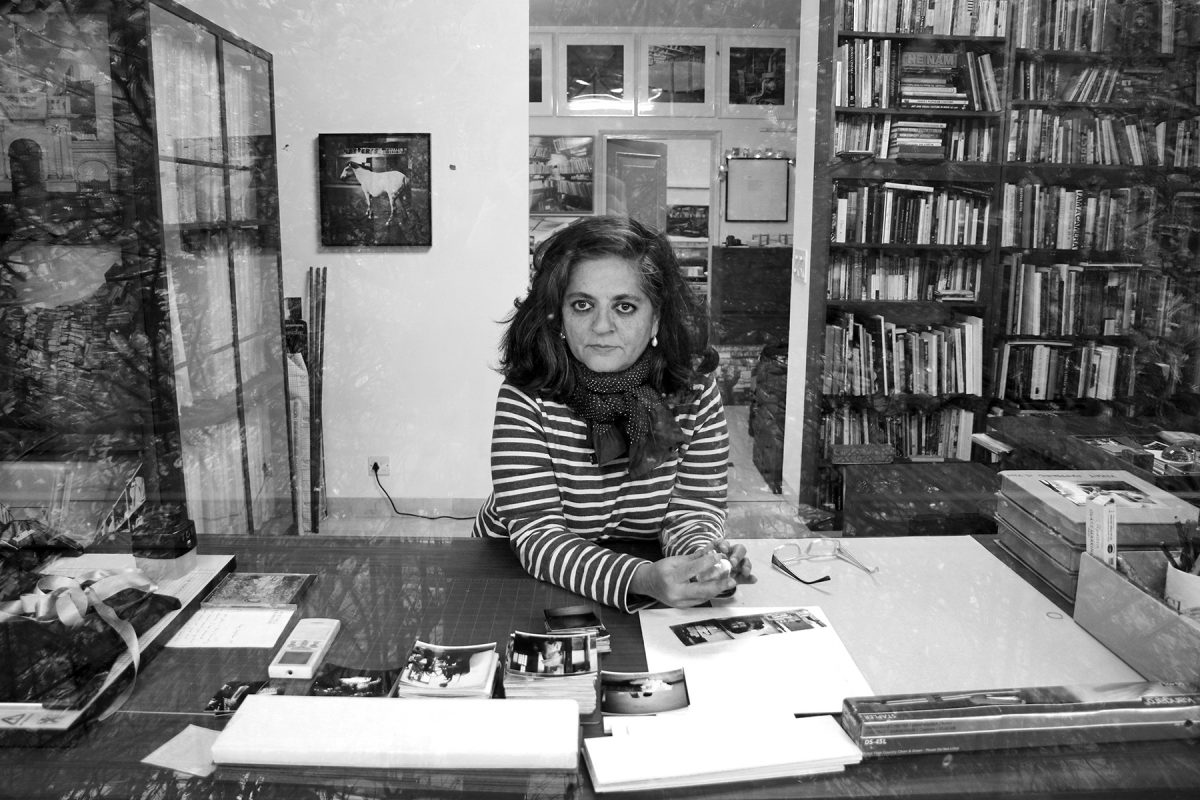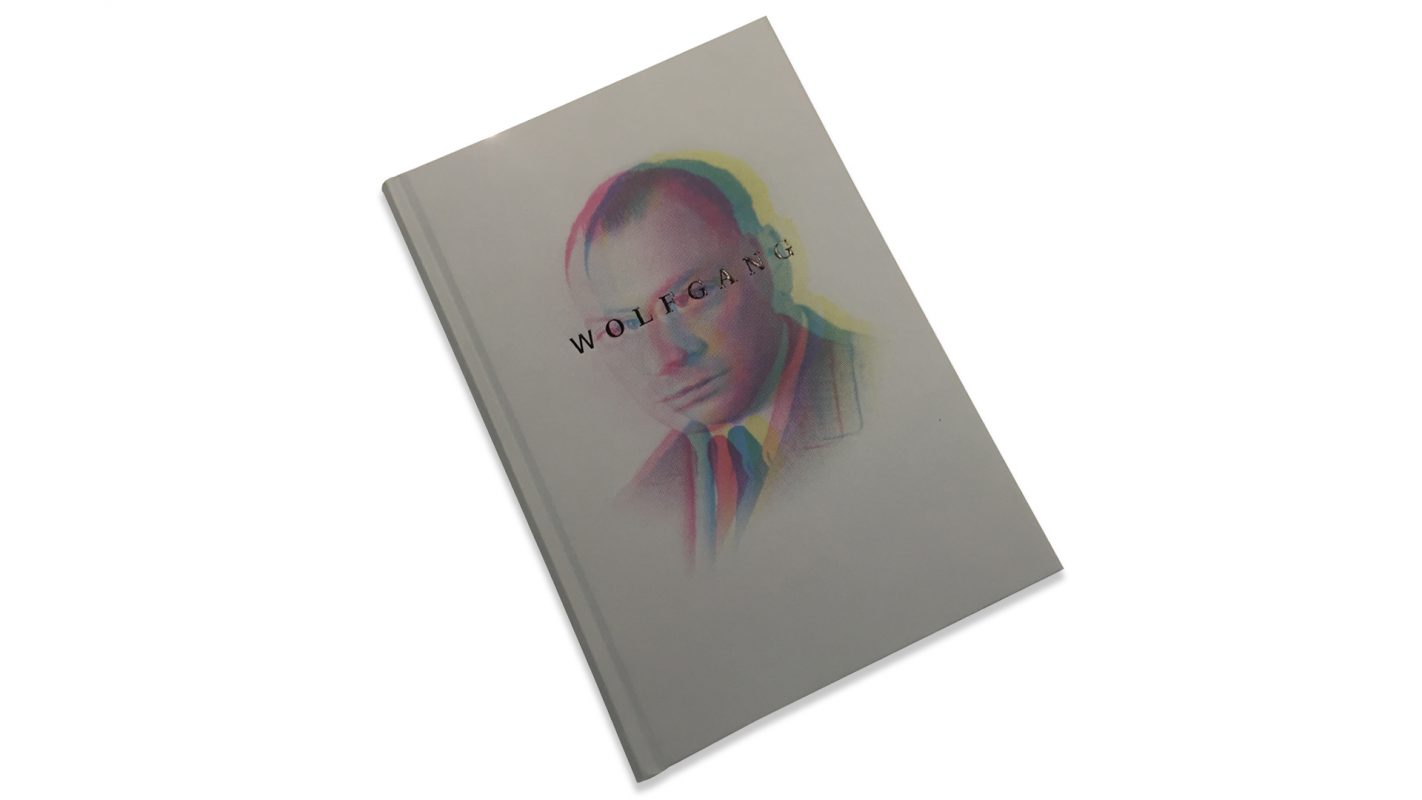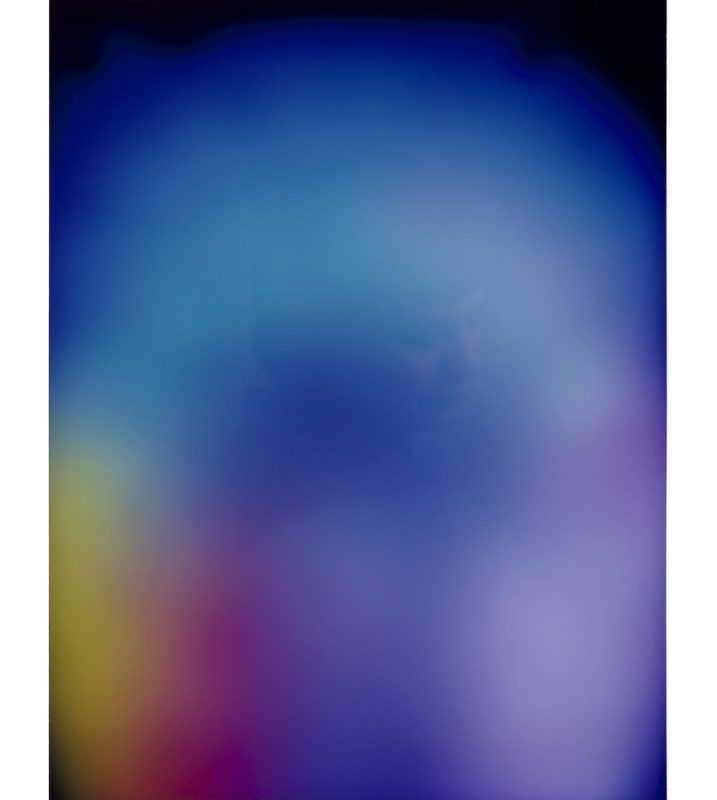Dayanita Singh
Artist and winner of The Paris Photo-Aperture Foundation Photobook of the Year Award 2017
New Delhi
Our Interviews series continues with Duncan Wooldridge in conversation with Dayanita Singh, hot off the heels of winning Photobook of the Year with Museum Bhavan at Paris Photo–Aperture Foundation PhotoBook Awards 2017. Published by Steidl, it was described by jury member Mitch Epstein as ‘a book of books, each one exploring an Indian motif, from printing presses to the administrative archive. Her work is a sophisticated merger of East and West sensibilities, and celebrates the democratic possibilities of the offset multiple’. Here, Wooldridge and Singh discuss exploring new forms and discourses around the space between publishing and the museum, photography as a way of cataloguing the world or even collecting experiences, the artist’s ongoing collaboration with the legendary Gerhard Steidl as well as their shared concerns of paper, correspondence and memory.
Duncan Wooldridge: In 2008 you made the book Sent A Letter, and in 2012 you exhibited your File Room. Around that time, your books became objects and your exhibition works became small museums. Both seem concerned with paper, correspondence and memory. Did something lead you towards making objects and collections?
Dayanita Singh: Well, photography is a way of cataloguing the world around us so making collections is what photographers do. I sometimes even call myself a collector. Having said that, I always knew the book was at the heart of my work. The book came first and then the exhibition – the exhibition was a catalogue of the images in the book. I used to wonder if there might be a form that allowed me to present the book as the exhibition and that started to happen with Sent A Letter. These miniature exhibitions were in fact letters I had made by cutting my medium format contact sheets, and pasting them in accordion fold books – like thank you letters after a journey with a friend.
In 2011 an old friend was visiting and asked to see my work. I wanted to show him something I had not shown to anyone else. I realised that paper was somehow a large part of my archive, libraries, archives, paper factories. He sifted through the 200 prints, put 24 aside and said File Room and right there the project was born, which will follow me till I die. But then I wanted the book to be an object as well. To find a form where it could be displayed on the wall along side photo prints and paintings. I made such a structure for File Room and then Museum of Chance had the same structure but I also found a way to make a book with 88 different covers! So now the book could be hung on the wall, and with 88 different covers, it also became an exhibition on the wall, breaking the very sequence of the book. With Museum Bhavan I found a way to make each box unique, so 3000 unique boxes were shipped from Delhi to Göttingen, Germany, and now you can choose which cover you acquire and in the box get 9 exhibitions of my Museums and a book of conversations. The cycle that started with Sent A Letter is now complete.
DW: Museum Bhavan collects multiple bodies of work into a kind of museum of museums, made of 9 book museums and conversation chamber, but it has a personal touch, in both the covers and the sense of scale and detail of each book. The idea that your books become like letters to a friend seems to capture something of the care and diligence that is often within your pictures. I’m especially interested in how this shows up in both File Room, and in parts of Museum Bhavan like Godrej Museum, where the first impression is one of awe at the amount of documentary material and the bureaucracy, but this gives way to a deep sense of appreciation of materiality, the sense of ‘matter’ in front of you, that can be touched, smelt, absorbed. Where did your interest in this come from?
DS: It’s difficult to say where ones interests come from, and I prefer not to probe too much (why question the muse?) but paper has always been a fascination. As a child I would gift wrap my mother’s shoe boxes because I loved the sound and feel of folding/creasing paper. I grew up with files, and once my father died we were inundated with litigation and even more files. I am very at home with files. It’s even my comfort zone you could say. That smell and sound of paper!
DW: Does this comfort zone extend to collecting, do you think? You’ve described your work as an act of collecting – each museum emerging from what you find recurring in your images. I wondered if your ideas of collecting were integral to your conception of photography as something that an artist uses? Your interest has moved beyond making singular pictures, even singular books.
DS: Gerhard (Steidl) was so happy when we made Sent A Letter, precisely because it could be acquired for the same amount of money as a book, but then it could transform into 7 exhibitions at the drop of a hat. And now with Museum Bhavan, you effectively are the curator of 16 exhibitions of mine (if you already have Sent A Letter). I sometime call myself an ‘offset’ artist, sometimes an ‘image collector’. Photography is a way of collecting experiences, no? Is that not the privilege of photography? Maybe we all are collectors of experiences. And then like a writer, one has to see what form one gives to those experiences. That part perhaps comes more easily when one is an artist. This idea of finding the right form for each work, like say Geoff Dyer does for each piece of his writing; as Calvino did too.
DW: In relation to collecting, but also the idea of finding the right forms, one of the most enigmatic, but also telling books of Museum Bhavan is the Ongoing Museum. Here it seems that you are playing with what it means to collect, assemble, remember and construct. Images of events, models, hands setting out displays, plaques, and movie scenes all seem to suggest that things both are, and are not what they seem. More importantly, it seems to suggest that they can be what you want them to be. Is your inclusion of the ‘ongoing’ a way of re-wiring those things which appear to be static, fixed down?
DS: Some of the books have two titles, to differentiate them from an earlier published version: eg File Room morphs into Godrej Museum and Museum of Chance into Ongoing Museum. But some like Little Ladies Museum and Museum of Photography have two titles anyway. It’s a little play on how one’s reading changes with the title.
DW: You’ve worked with Gerhard Steidl for a long time, rather than switching between different publishers. Can you describe your working relationship? It seems integral to the books now.
DS: None of this could have happened without the support of Gerhard Steidl, he is my co-conspirator. I think he enjoys the challenge each book brings. At first he says ‘no’, and then the next day he agrees to each crazy idea of mine. I doubt he makes any money with my books, but he likes how we push the envelope each time, though the 88 different covers did drive the bindery crazy. I then made a suitcase for the sets (of Museum Bhavan), and now have a suitcase museum since I was the only one who has the full sets. It was also a way to make people go to a bookshop or an event, to choose your own cover, because online you would not be able to choose.
DW: In your discussion with Steidl in the Conversation Chambers part of the Museum Bhavan (a small stapled book, with interviews between Dayanita Singh and Gerhard Steidl, and with Aveek Sen), it seems like you come together over an interest in paper? Is that a place where you share a passion?
DS: Yes Gerhard and I share a great love for paper. He even made a perfume called Paper Passion. The interview in the pocket museum was pre Museum Bhavan but ends with my asking him if he would consider such an object. He said ‘yes’.
DW: Behind your shared interests in the materials of bookmaking, your work also has a concern with the work going out into the world, it reaching different homes and being available over being exclusive. Is distributing a book an act that has particular social and political messages for you?
DS: The magic of photography is not just in the image but also in the dissemination it allows. After all, a photograph can exist in many different ways. The art world limits this scope of photography and the book is where photography is at its democratic best, and when one can make a book that is on par with one’s exhibition, or is indeed the exhibition, then could one say that it takes photography beyond even the art world. I always think that there needs to be a place between the publishing house and the gallery that has the dissemination of publishing and the ‘uniqueness’ of the art gallery. Can a book be both? Steidl and I both believe it can and I think we present this very contradiction with Museum Bhavan.
DW: As I understand it, your critique is of the exhibition, and the way that it perpetuates a standard or homogeneous audience. The opportunity of the book is the way it is open to the sites and layers of discovery – in the bookshop, on a friend’s bookshelves, in a library, or even at a flea market. It could be seen by almost anyone. It reinstates Malraux’s idea that art (art history) comes to you. You seem to be wanting to change what the museum is, and who it is for…
DS: Yes, it is a critique of how we exhibit photography, especially since photography has so many forms embedded in it – and its dissemination is part of the medium. Ongoing Museum is to suggest just that – a museum needs to be ongoing, ever changing, waxing and waning. ♦
Image courtesy of Dayanita Singh. © Ulrike Sommer













